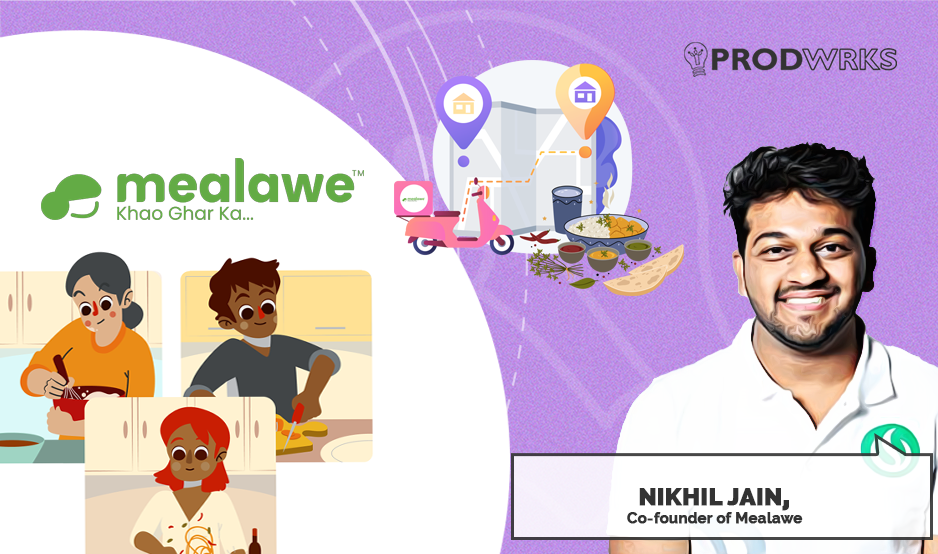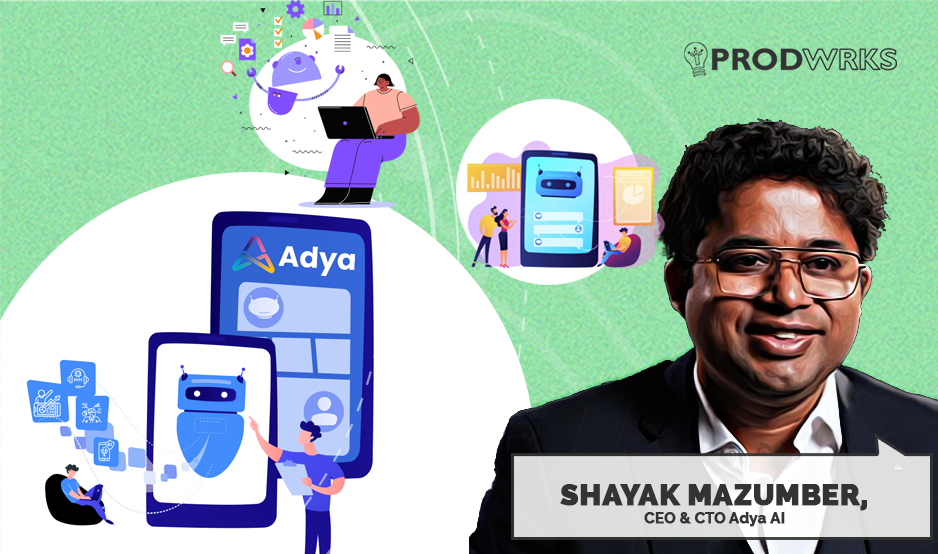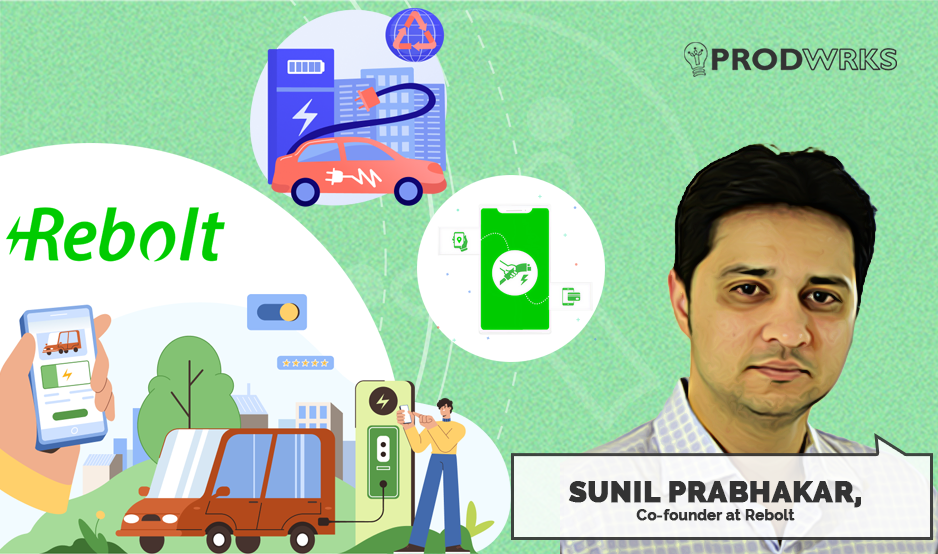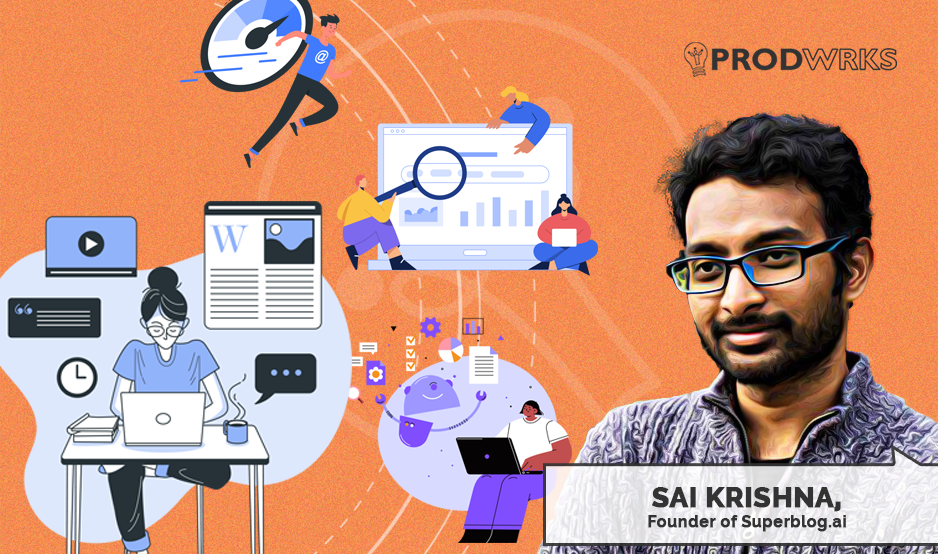
Scaling a product business from $0 to $81K ARR as a solo founder is no small feat—especially in the crowded sector of content management systems (CMS) with competitors like WordPress. But Sai Krishna, an indie hacker and serial product founder, did just that with SuperBlog.AI, a micro-SaaS platform that takes the technical complexity out of creating and publishing high-quality blogs.
For businesses, effective content marketing isn’t just about publishing well-written blogs. It’s about driving traffic, generating leads, and converting blog visitors into customers. However, even the most SEO-optimized, high-quality content can fail if a blog takes too long to load. Sai experienced this firsthand when his WordPress blogs—his primary inbound marketing channel—attracted two million visitors but struggled with slow load times and rising hosting costs.
“Google survey that showed more than 60% of visitors abandon a page if it takes longer than three seconds to load. On top of that, I was paying $400 to run my WordPress blogs!” Sai recalls.
Frustrated by the lack of seamless, high-performance blogging platforms and tools, Sai Krishna set out to build one himself – a solution that would automate SEO, speed optimization, readability, and conversions, while allowing business content writers to focus purely on writing.
This is the story of Sai Krishna’s SuperBlog.ai—a jam stack blogging platform that helps B2B SaaS and B2C brands likeSwiggy, Aisle, and Unacademy supercharge their content marketing. In a conversation with the ProdWrks team, Sai Krishna shares his journey of bootstrapping and scaling SuperBlog.AI from an idea to a profitable micro-SaaS business with $81K ARR.
Building a Blog Optimized for B2B SaaS and B2C
Superblog’s customers are primarily B2B SaaS companies and B2C businesses focused on lead generation through SEO-driven inbound marketing, aiming to drive traffic and sales.
Sai shared that he did not have to do much to validate Superblog’s problem statement or product-market fit as he was solving his own problems as a product founder who was frustrated with popular content management systems like WordPress, where he feels posting, optimizing, and managing blogs are a hassle.
“The validation is already done because I'm among the WordPress communities. So I know the problem statements in and out. I did not have to do a lot of user research.”
“I just looked at search volumes—things like ‘WordPress alternative’ or ‘fast blogging platform.’ Explains Sai “When I saw consistent demand, it confirmed that this wasn’t just my problem; plenty of others were looking for a solution too.”
Superblog today serves three key stakeholders:
Direct Users: Writers and marketing specialists who log into SuperbBlog to create content.
Indirect Users: Readers who discover and engage with content published on the platform, often becoming potential leads for Superblog’s customers.
Buyers: Decision-makers, including founders and heads of marketing, who evaluate and purchase the platform.
“When you publish any content, readers find it through Google, making them indirect users. Ideally, they convert into leads and eventually into paying customers for our clients. My responsibility with Superblog is to ensure those conversion rates are high.”
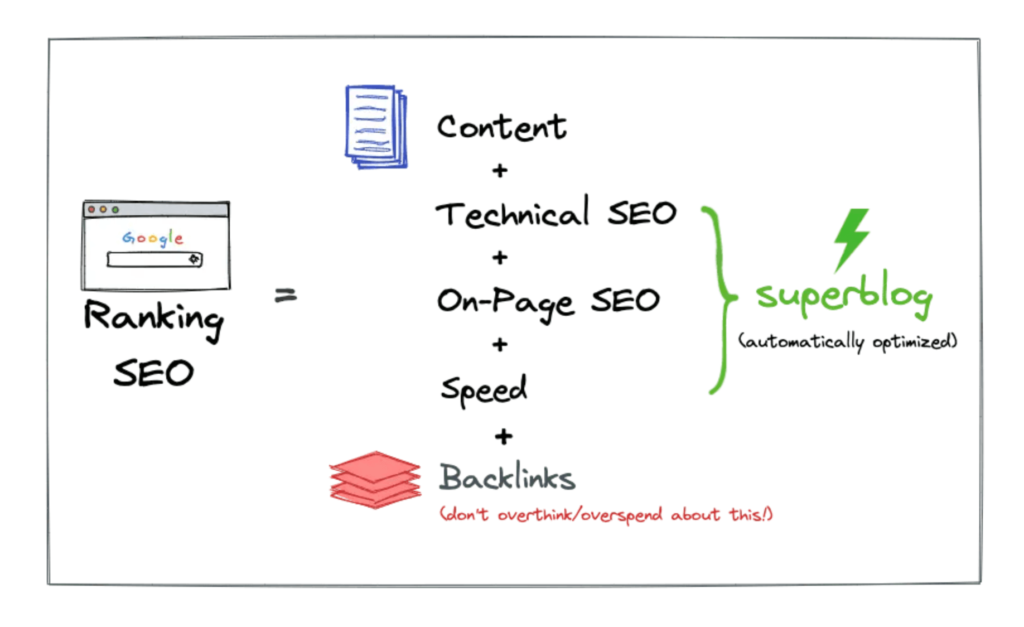
“We focus on structuring content with visible CTAs. Substack and Medium also enforce a standardized format. We’ve retained a structure that works the best for the technical aspects that optimize for SEO and conversions,” Sai adds.
How SuperBlog Helps Businesses Drive Traffic
Key functionalities of Superblog:
Performance automation: Superblog optimizes LCP (Largest Contentful Paint), a key metric in search rankings that measures how long it takes for a web page’s main content to load. “If a page takes more than three seconds to load, over 60% of visitors drop off,” Sai explains.
AI-Assisted Content Organization: Superblog has a built-in AI content aide that optimizes headings (H1, H2, H3) for SEO, ensuring well-structured content. Sai says, “Writers spend time figuring out SEO-friendly structures. Superblog removes that friction.”
Content Portability: Users can import and export all their content anytime without restrictions, maintaining full control over their work, in case they want to switch to or switch out of Superblog. “People should always have full control over their content, whether they stay or leave,” says Sai.
Major features in Superblog include the ability to connect your own domain, subdirectory hosting, AI helper, free SSL & CDN, privacy-friendly analytics, user & roles, pre-built lead generation forms, auto image optimization, auto sitemaps, import from Google Docs & Notion, automatic post schemas, FAQS for posts (Schema added automatically) and more.

With high-quality content as a foundation, technical optimization becomes the tiebreaker when two competitors offer similar value. Sai explains “Page speed, clean design, and even font readability—these details influence how long users stay and engage, sending strong signals to ranking systems.”
Journey from 0 to 100 customers
The first few days of SuperBlog’s launch were straightforward with the pitch being focussing on the platform’s speed. Sai explains “My pitch for SuperBlog was that a decent WordPress blog loads in about six seconds. And my product would do it in one!”
That message, backed by a video demo, was shared on LinkedIn, Twitter, and WhatsApp, securing the Superblog’s first two paying customers in December 2020 it launched. Today, Superblog has 190 paying customers.
Sai shared that his customer acquisition strategy to get from 0 to 100 customers, revolved around three key channels:
SEO: Organic discovery played a huge role as most users who found Superblog, were people who searched for faster, more efficient blogging alternatives on Google.
Word of Mouth: The early users of the product shared it with other users.
Building in Public: What started as transparency around product development became a magnet for early adopters. The more people saw the process, the more they trusted the product.
But at the end of the day, the product matters the most, says Sai.
“One reason why they immediately got connected is because Superblog is a 10X better solution than what they previously tried or anything that's there on the market. In the end, your product must speak.”

Gaining User Trust By Building in Public
Superblog isn’t Sai’s first product. Earlier he founded mHotspot, a free Windows software to turn a laptop into a Wi-Fi hotspot to share internet and files, and SpotPlay, a patent-pending technology to serve content through Wi-Fi without Internet.
Throughout his product journey, Sai has shared and continues to share learnings and updates about his products via blogs and social media. Though started as a personal experiment, his ‘building in public’ philosophy became a strategic decision to showcase the active development of Superblog and acquire users and feedback.
"The goal was to break the trust barrier. There should always be chatter about your product on social media and a constant flow of updates to show active development. That's why I choose to build in public. Audience building and lead generation are just by-products.”
Transparency in development was key for attracting early adopters. "When people see that a product is actively improving, they trust it more," Sai explains.
“Choose mediums where users hangout”
Sai also emphasizes the importance of choosing the right platforms for engaging with one’s customers. For Superblog LinkedIn and Twitter are the primary platforms since the audience engages there.
He also notes that platform choices should align with the customer type. He explains “Always hang out where your customers are. For a B2C audience, platforms like Reddit, Instagram, or TikTok would be more suitable”
“Wherever you need to create content, you need to pick that platform wisely, and understanding where your audience is important to reaching them effectively and building a strong brand presence,” he advises.
Customer Support is Part of the UX and Engagement
Being a one-person micro-SaaS product, Sai has cleverly woven customer support directly into the product, making it a part of the user experience. The platform is designed to anticipate user needs and provide solutions with a self-service model.
For example, when users set up a custom domain, they’re guided with clear instructions, video tutorials, and helpful text guides. As a result, support requests are kept to a minimum. Sai shares, “I get almost zero support queries for connecting a custom domain.”
This “embedded” support empowers users to solve problems independently, significantly reducing the need for external help. “Some days, I don’t get any customer requests at all,” Sai adds.
All this adds up to an impressive customer lifetime value (LTV) OF $800 for Superblog.
“Less than 2% of users who have left Superblog have done so because they don’t love the product. Our six-month churn stands at just 1.6%,” says Sai.
The Shift from Search Engine Optimisation to Chat Engine Optimisation
“It’s no longer about being on page one—it’s about being in the top five,” Sai explains. “There’s no second or third page anymore. It’s just a shortlist of options. It is even more difficult and important these days to push content and make sure you are in that training data of the AI.”
However, despite the shift, the core concept of SEO–discoverability–still remains relevant. Superblog follows established protocols and best practices like sitemap.xml, robots.txt, and schema JSON-LD that are well-documented and integral for search engines to index content.
"People say SEO is dead, but that’s not entirely true. The core problem has always been discoverability. The question isn’t just how to rank on Google anymore—it’s how potential customers will find your product, whether through search engines or AI-driven tools."
However, Sai acknowledges that the future of content discoverability isn’t entirely clear. He shares that the platform is evolving alongside current standards set by search engines.
“There’s a lot of speculation around how crawlers will evolve. Right now having well-structured, formatted HTML content works well with Superblog, but no one truly knows the exact future of how search engines or AI-driven systems will crawl and process data.”
Sai envisions a future where AI systems like LLMs can easily extract and process content through a new standard, such as the “LLM.txt file”. By making content more accessible for AI, Superblog aims to set this standard.
Sai says “Maybe everybody will do like pre-compiled embeddings and make it readily available for the LLMs. I think that’s the way where it will go to work.”
Evolution of SuperBlog's Pricing Strategy
"That feedback made me rethink everything, and I decided to start with a $9, $19, and $49 pricing model."
He experimented with different tiers to refine the pricing structure starting with $19 As Feedback from another experienced founder suggested that removing the $9 tier entirely would lead customers to gravitate towards the $19 option, which seemed more cost-effective.
“I trusted the advice of a founder with experience in large SaaS businesses, and when I removed the $9 plan, there was no drop-off in signups or conversions.”
After continuing to experiment, the final pricing structure became $29, $49, and $99, with careful consideration of the features included in each plan.
“I did another price test to see if customers would accept a $29 starting price by removing certain features, and it worked—$29, $19, $49, $99 was the final mix.”

Speaking about his David vs Goliath battle with WordPress, Sai shares, “WordPress powers 40% of all the blogs on the internet. This means that I have a very strong competitor. But, it also means I'll have very strong or loud voices against WordPress too. Now, all I need as a business is to target 333 customers who will pay me $29 per month who are unhappy with WordPress, to get to 100K in recurring revenue.”
At present Superblog’s annual recurring revenue stands at $81,000 and Sai intends to scale it to $100k by 2026.
Reflections and the Road Ahead for Superblog
Reflecting on his journey of SuperBlog, Sai Krishna recalls things that he would have done differently starting from when he was building the product owing to the rigid framework he followed.
He quotes “When I was building the product, I was very stubborn and fixated on creating a completely rigid product like Substack or Medium, where customers would hand over the UI to me. But as I worked with customers, I realized businesses have their requirements. I made many fixes and patches to add customizability and looking back, I would have included that support from day one instead of doing patchwork.”
The founder shared how his approach to product development has evolved with shifting customer needs owing to the rise of AI, so he had to adjust. “With AI becoming a big trend, customers started asking, ‘Why don’t you build AI features into the platform itself?
This trend shift impacted his roadmap, pushing him to incorporate new technologies. Similarly, he noticed changes in customer expectations.
“With the advent of AI, customers were also asking for brand harmony, graphics, and imagery to be included. It became clear that these were important. You look at what new tools are coming up in the industry, and what my customers want from those tools. That’s how the roadmap shifts.’’ he said.

